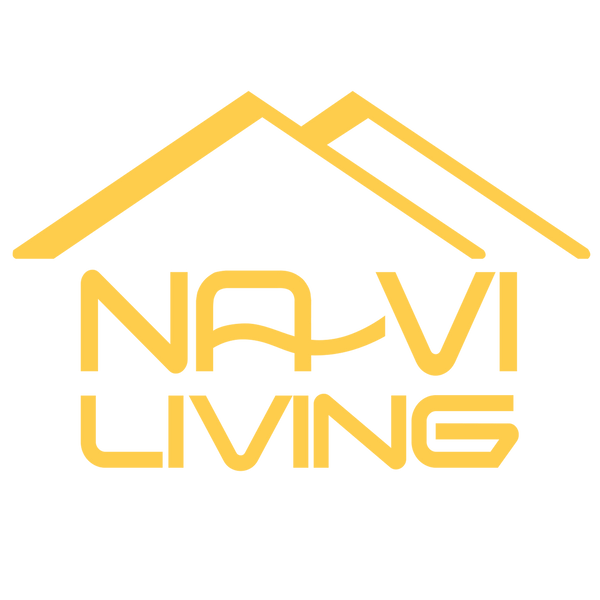Build to Rent (BTR) marketing is now essential for driving occupancy, investor confidence, and long-term community success. As Canada’s BTR market expands across cities like Toronto, Vancouver, and Québec City, developers must adopt strategic marketing to stand out. This guide explores how branding, digital campaigns, and data-driven insights attract modern renters from families and students to corporate tenants. Whether you’re launching a single-family or multi-family BTR community, the right marketing can maximize lease-up rates and create lasting value.
- BTR vs Coliving: Understanding Modern Housing Models
- Growth Drivers in Build to Rent (BTR) Sector
- Real Estate Investment: Understanding the Market and Effective Strategies
Build to Rent Market in Canada

The Build to Rent (BTR) market in Canada is poised for continued growth in 2025 and beyond, driven by strong rental demand, demographic shifts, and evolving investor interest. Major urban centers such as Toronto, Vancouver, Montréal, and Québec City are leading the way, with Québec City recently topping Canada’s tightest rental markets at a 99.1% occupancy rate. Despite some cooling in rent growth and rising vacancy rates in certain metros, the overall rental sector remains resilient due to ongoing immigration, limited homeownership affordability, and strong infrastructure investments.
BTR developments are increasingly favored because they provide professionally managed, amenity-rich rental communities designed for long-term tenants. These projects typically feature larger-scale developments with modern amenities, catering to families, young professionals, students, and corporate renters. The Canadian market is also seeing a shift towards mixed-use communities and transit-oriented developments, aligning with tenant preferences for convenience and lifestyle.
While new supply has increased, especially in Alberta and Ontario, construction levels remain muted compared to historical peaks due to elevated costs and interest rates. This constrained supply, combined with steady demand, supports a positive outlook for BTR projects, particularly those offering high-quality living experiences in well-connected locations.
Why Is Brand And Marketing So Important In Build To Rent Developments?
Brand and marketing play a crucial role in the success of Build to Rent developments by influencing tenant acquisition, retention, and investor confidence. In a competitive rental market, a strong brand differentiates a BTR community by communicating its unique lifestyle, amenities, and values. Renters today expect more than just a place to live, they seek a sense of community, convenience, and quality service, all of which are conveyed through effective branding.
Marketing strategies for BTR must be multi-faceted and data-driven, combining digital advertising, social media engagement, content marketing, and local outreach. This approach ensures continuous visibility and engagement with target audiences such as families, students, and corporate renters. Clear, transparent communication about leasing options, community features, and tenant services builds trust and accelerates lease-up rates.
Moreover, brand consistency across all touchpoints from online platforms to on-site experiences reinforces tenant satisfaction and loyalty. For investors, a reputable brand signals operational excellence and reduces perceived risk, attracting capital and supporting long-term project viability.
For families, students, and corporate renters seeking tailored rental solutions in Canada, platforms like Naviliving provide specialized services that connect you with homes designed to fit your lifestyle and needs, leveraging strong brand marketing and community engagement to enhance your rental experience.
What Makes Good Build-to-Rent Marketing?

B2B Marketing: Engaging Investors on LinkedIn and Through Media Relations
Successful Build-to-Rent (BTR) marketing begins with cultivating strong relationships with institutional investors, developers, and financial partners. LinkedIn serves as a powerful platform to share insightful content, project milestones, market trends, and thought leadership pieces that demonstrate expertise and build trust. Regular updates on project progress, sustainability efforts, and community impact resonate well with investors seeking transparency and long-term value.
Media relations complement digital efforts by securing coverage in real estate, finance, and industry-specific publications. Press releases announcing new developments, funding rounds, or strategic partnerships enhance credibility and visibility. Hosting webinars, panel discussions, and investor briefings further engage stakeholders, providing forums to address questions and showcase the strength of your BTR portfolio. This B2B focus not only attracts capital but also builds a network of advocates who can amplify your brand.
Driving Traffic: Strategies for Attracting Residents
Attracting residents to BTR communities requires a comprehensive, data-driven marketing strategy that targets renters across multiple channels. Search engine optimization (SEO) ensures your website ranks highly when prospective tenants search for rental options. Paid advertising campaigns on social media platforms like Facebook, Instagram, and TikTok allow precise targeting based on demographics, interests, and behaviors.
Content marketing through blogs, videos, and virtual tours helps educate renters about the benefits of BTR living, highlighting amenities, neighborhood features, and lifestyle advantages. Interactive tools such as online application portals and chatbots improve user experience, making it easy for prospects to inquire and apply.
Community engagement is equally important. Hosting events such as open houses, fitness classes, or social mixers creates buzz and fosters a welcoming atmosphere. Partnering with local businesses, universities, and employers can extend your reach to key renter segments like students and corporate tenants. Additionally, referral programs incentivize current residents to bring in friends and family, boosting occupancy organically.
Target Audience: Renters by Choice
The rise of “renters by choice” reflects a significant shift in housing preferences. This demographic values the freedom to live without the burdens of homeownership such as maintenance, property taxes, and long-term financial commitments and prefers the flexibility to relocate for work, education, or lifestyle changes.
Marketing to renters by choice means emphasizing the lifestyle conveniences that Build-to-Rent communities uniquely offer. Highlight features like 24/7 maintenance services, secure package delivery, smart home technology, and community events that foster social connections. Messaging should focus on the peace of mind that comes with “lock and leave” living, appealing to those who travel frequently or prioritize flexibility.
Moreover, showcasing inclusive and diverse community environments attracts a broad spectrum of renters, from young professionals and families to retirees and corporate clients. Tailoring communications to address their specific needs whether it’s proximity to schools for families, study spaces for students, or furnished units for corporate renters makes your marketing more effective and relevant.
Leveraging Data and Technology in Marketing
Modern BTR marketing leverages data analytics and technology to optimize campaigns and improve tenant targeting. Customer Relationship Management (CRM) systems track leads, automate follow-ups, and personalize communications. Analytics tools monitor website traffic, ad performance, and social media engagement, allowing marketers to refine strategies in real-time.
Virtual reality (VR) and augmented reality (AR) technologies provide immersive property tours, enabling prospective tenants to explore units remotely, which is especially valuable for international or corporate renters relocating from afar. Mobile apps facilitate rent payments, maintenance requests, and community updates, enhancing tenant satisfaction and retention.
Building a Strong Brand Identity
A compelling brand identity differentiates your BTR development in a crowded market. This includes a memorable name, logo, color palette, and consistent messaging that reflects the community’s values and lifestyle. Storytelling that highlights resident experiences, sustainability initiatives, and community impact resonates emotionally with renters and investors alike.
Brand consistency across all touchpoints from digital platforms and signage to leasing offices and resident communications builds trust and loyalty. Positive online reviews and testimonials further reinforce your reputation, influencing prospective tenants’ decisions.
- Institutional investor engagement Build to Rent
- Tenant acquisition strategies BTR
- Multi-channel Build to Rent marketing
- Data-driven rental marketing
Real-World Impact
Developers who master the synergy of B2B and B2C marketing position their Build to Rent projects for long-term success. They attract essential capital while filling units quickly with satisfied tenants, creating vibrant communities that appeal to both investors and residents. This holistic marketing approach is a competitive advantage in the evolving rental housing landscape.
For families, students, and corporate renters seeking tailored rental solutions in Canada, platforms like Naviliving provide specialized services connecting you with homes designed to fit your lifestyle and needs. Naviliving’s marketing expertise ensures you find the right community with ease and confidence.
Build To Rent Marketing for Single and Multi-Family Communities

Effective marketing for Build to Rent (BTR) communities requires tailored strategies that reflect the unique characteristics and tenant profiles of single-family and multi-family rental properties. By leveraging targeted digital marketing, brand development, and community engagement, developers and property managers can maximize lease-up rates, tenant retention, and long-term project success.
Single-Family Build to Rent Marketing
Single-family rental (SFR) communities attract renters who seek the space, privacy, and lifestyle of detached homes but prefer the flexibility and convenience of renting. This segment often includes families, pet owners, and professionals relocating for work.
Key Marketing Strategies for Single-Family BTR:
- Clear Rental Messaging:
Explicitly communicate that homes are available for rent, not sale, through signage, websites, and digital ads. This avoids confusion and sets expectations early. - Local SEO and Geo-Targeting:
Optimize for location-specific keywords like “single-family rentals near me” or “family rental homes in [city]” to capture high-intent local search traffic. Use geo-fencing ads to target prospects physically near the community. - Highlight Family-Friendly Features:
Showcase spacious yards, safe neighborhoods, proximity to schools and parks, and pet-friendly policies. Emphasize lifestyle benefits like outdoor space and community safety. - Professional Visual Content:
Use high-quality photos, drone footage, and 3D virtual tours to highlight home interiors, outdoor areas, and neighborhood amenities. Virtual tours increase engagement and can boost interest by over 40%. - Targeted Social Media Campaigns:
Utilize Facebook and Instagram ads targeted by demographics such as families, pet owners, and relocating professionals. Collaborate with local influencers to build authenticity. - Community Engagement:
Promote neighborhood events, local partnerships, and resident testimonials to build trust and foster a sense of belonging. - Referral Programs:
Encourage current residents to refer friends and family with incentives, reducing leasing costs and speeding up occupancy.
SEO Keywords to Use for Single-Family BTR:
- Single-family rental homes Canada
- Family-friendly rental communities
- Pet-friendly rental homes
- Rental homes near schools
- Suburban rental properties
Multi-Family Build to Rent Marketing
Multi-family BTR developments typically consist of apartments, condos, or townhomes with shared amenities such as fitness centers, lounges, co-working spaces, and rooftop terraces. This product type appeals to a broad range of renters including young professionals, students, retirees, and corporate clients.
Key Marketing Strategies for Multi-Family BTR:
- Emphasize Amenities and Lifestyle:
Highlight modern conveniences like smart home features, fitness centers, pet areas, package lockers, and community events. Lifestyle-driven messaging resonates strongly with younger renters and professionals. - Digital-First Marketing:
Optimize for keywords such as “apartments for rent in [city],” “luxury rental apartments,” and “corporate housing solutions.” Use paid search, social media advertising, and retargeting campaigns to drive traffic. - Virtual Tours and Online Leasing:
Provide immersive virtual tours and streamlined online application processes to accommodate tech-savvy renters and remote prospects, increasing conversion rates. - Flexible Leasing Options:
Promote short-term leases, furnished units, and corporate rental packages to attract transient tenants and business travelers. - Community Building Initiatives:
Organize social events, wellness programs, and resident clubs to foster community engagement and improve tenant retention. - Reputation and Review Management:
Encourage positive online reviews and testimonials on platforms like Google, Yelp, and HomeViews to build social proof and trust. - Content Marketing and Storytelling:
Share resident stories, neighborhood guides, and lifestyle blogs to create emotional connections and boost SEO.
SEO Keywords to Use for Multi-Family BTR:
- Multi-family rental communities
- Luxury apartments for rent
- Corporate rental housing
- Short-term rental apartments
- Build to Rent apartments Canada
Additional Innovative Tactics for Both Single and Multi-Family BTR
- Augmented Reality (AR) and Virtual Reality (VR) Tours:
Use AR/VR technology to offer interactive property tours, allowing prospective tenants to visualize different layouts and furnishings from anywhere. - Social Media Influencer Partnerships:
Collaborate with local lifestyle influencers to showcase the community’s best features authentically and reach wider audiences. - Sustainability and Eco-Friendly Features:
Highlight green building certifications, energy-efficient appliances, and community green spaces to attract environmentally conscious renters. - Mobile Apps and Digital Platforms:
Develop dedicated apps for leasing, maintenance requests, and community engagement to enhance tenant experience and streamline management. - Seasonal Promotions and Themed Events:
Use holidays and local events to create special leasing promotions or host community gatherings that increase visibility and resident satisfaction. - Data-Driven Marketing:
Leverage analytics tools to track campaign performance, optimize ad spend, and personalize messaging based on renter demographics and behavior.
Frequently Asked Questions (FAQ)

Q: What is a Build to Rent (BTR) model?
A: Build to Rent is a housing model where residential developments are specifically designed and constructed for long-term rental rather than sale. These properties are professionally managed at scale, offering tenants secure, well-maintained homes with longer leases and enhanced amenities. Unlike traditional private rentals often managed by individual landlords, BTR projects provide stability and community-focused living environments.
Q: How long does it typically take to complete a Build to Rent project?
A: The development timeline for BTR projects generally ranges from site acquisition, design, permitting, construction, and lease-up phases. Larger or more complex projects may require additional time due to regulatory approvals and construction logistics.
Q: What are the typical lease terms in Build to Rent communities?
A: BTR developments usually offer longer lease terms than traditional rentals, providing tenants with housing stability. However, flexibility is maintained with options for shorter leases when needed, such as for corporate or transient renters.
Q: What amenities are commonly included in Build to Rent developments?
A: Popular amenities include fitness centers, communal lounges, co-working spaces, pet-friendly areas, package delivery systems, smart home technology, and secure parking. These features enhance tenant lifestyle and differentiate BTR from conventional rental options.
Q: Who manages Build to Rent properties?
A: BTR properties are managed by professional property management companies or dedicated on-site teams responsible for leasing, maintenance, tenant relations, and community engagement. This centralized management ensures consistent service quality and rapid response to tenant needs.
Q: Are rents in Build to Rent properties higher than traditional rentals?
A: Generally, rents in BTR communities can be higher due to the inclusion of premium amenities, professional management, and better maintenance standards. However, tenants benefit from longer leases, enhanced services, and a more stable living environment.
Conclusion
Marketing is the engine behind every successful Build to Rent community. From attracting institutional investors to leasing homes to the right renters, a well-defined BTR marketing strategy drives both revenue and reputation. Whether you’re promoting single-family rentals in growing suburbs or multi-family apartments in urban hubs, the combination of brand identity, technology, and tenant-focused messaging is key. As the Canadian BTR market matures, developers who master multi-channel, data-driven marketing will lead the way building communities that resonate with residents and deliver returns for investors.




